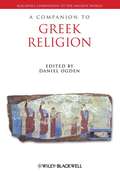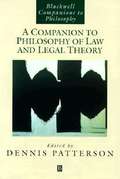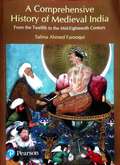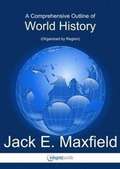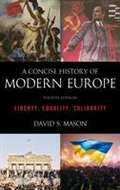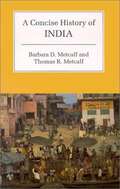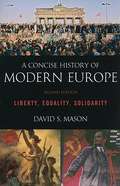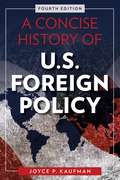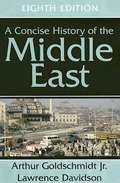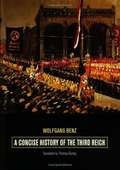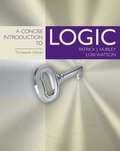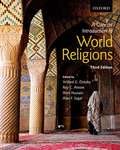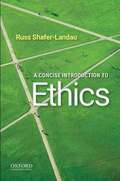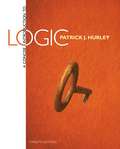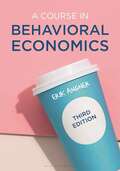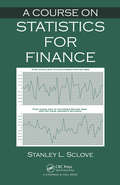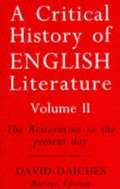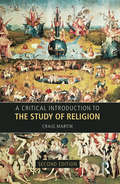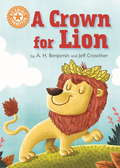- Table View
- List View
A Class Play
by Margeaux Lucas Gus GedatusThe fun and excitement of English and Language Arts learning continues in Grade 2 of Reading Street. This comprehensive and dynamic curriculum for homeschooling is geared toward young children who have some foundational English and Language Arts knowledge and are ready to strengthen their skills. Comprised of engaging activities, challenging content and weekly quizzes, Reading Street: Grade 2 is the next step in your child's path toward becoming a lifelong learner and reader. As with all Reading Street products, the Grade 2 system is formatted to help students meet certain age-appropriate goals. After completing this English and Language Arts homeschool program, your child should be able to: Read and comprehend two-syllable words. Identify common prefixes (such as pre-, un-, or re-) and suffixes (such as -able, -ad and -er). Correct mistakes made when reading out loud. Read books with two or more chapters. Understand the structure of stores (i. e. beginning, middle and end). Start selecting reading materials based on his/her own interests. Identify the "who," "what," "when," "where," "why" and "how" of the text. While the goals of second Grade English and Language Arts are numerous, Reading Street will help you craft engrossing lessons. Your child will garner important English and Language Arts skills while completing a workbook, reading stories and poems, and taking assessments. Planning these lessons will be easier than ever, as all Reading Street systems are broken down into weekly Big Ideas. All the work your child does on a given week is formulated around that single concept for an organized and challenging curriculum. With six easy-to-follow units, Reading Street: Grade 2 is the perfect tool for homeschooling parents. Your child will enjoy the reading selections and activities, and you'll love to see your student growing into a knowledgeable individual. We're confident that this product is the right one for you. For more information on the specific materials found in Grade 2 of Reading Street, check out the Features and Benefits page.
A Community Cares and Shares (Into Reading, Level T #21)
by Diana NoonanNIMAC-sourced textbook. Who is in your community? A community is a group of people who live in the same area or have something in common. People in a community work together to make everyone feel safe and welcome!
A Companion To Greek Religion (Blackwell Companions To The Ancient World #27)
by Daniel OgdenThis major addition to Blackwell’s Companions to the Ancient World series covers all aspects of religion in the ancient Greek world from the archaic, through the classical and into the Hellenistic period. Written by a panel of international experts Focuses on religious life as it was experienced by Greek men and women at different times and in different places Features major sections on local religious systems, sacred spaces and ritual, and the divine
A Companion to the Philosophy of Law and Legal Theory
by Dennis PattersonAn ambitious survey of the prominent theories, topics, subjects, and discourses currently being tossed about in law school and in undergraduate legal studies. The 45 original essays discuss expected legal preoccupations such as property law and criminal law but also extend the boundaries of those subjects by ruminating on constitutional law and equality, legal positivism, postmodern theories, feminist jurisprudence, law and literature (for lawyers inspired by John Grisham<-->just kidding), and also ranging dialogues in indeterminacy, loyalty, and punishment and responsibility. Annotation c. by Book News, Inc. , Portland, Or.
A Comprehensive History of Medieval India: From the Twelfth to the Mid-Eighteenth Century
by Salma Ahmed Farooqui"A Comprehensive History of Medieval India From the Twelfth to the Mid-Eighteenth Century" by Salma Ahmed Farooqui provides a detailed exploration of the socio-political, economic, and cultural developments in medieval India. Farooqui meticulously examines the period from the 12th to the mid-18th century, covering the rise and fall of various dynasties, the impact of invasions and conquests, and the transformation of society and administration. The book delves into the rich tapestry of medieval Indian history, addressing key events such as the Delhi Sultanate, the Mughal Empire, and the regional kingdoms. It also sheds light on the interactions between different religious and cultural communities, providing a nuanced understanding of the diverse and complex dynamics that shaped this crucial era in Indian history.
A Comprehensive Outline of World History
by Jack MaxfieldThis course presents Jack E. Maxfield's "A Comprehensive Outline of World History" as originally organized, chronologically by era and across regions within an era.
A Concise History Of Modern Europe: Liberty, Equality, Solidarity
by David MasonHighlighting the key events, ideas, and individuals that have shaped modern Europe, this fresh and lively book provides a concise history of the continent from the Enlightenment to the present. <p><p> Drawing on the enduring theme of revolution, David S. Mason explores the political, economic, and scientific causes and consequences of revolution; the development of human rights and democracy; and issues of European identity and integration. He deliberately avoids a detailed chronology of every country and time period, instead emphasizing the most crucial events in shaping contemporary Europe. <p> Fourteen focused chapters address such topical issues as the Enlightenment; the French Revolution and Napoleon; the Industrial Revolution; the theories and impact of Marx and Darwin; the revolutions of 1848, 1917, and 1989; the unifications of Germany and Italy; European imperialism; the two world wars; the Cold War; the evolution and expansion of the European Union; and current issues confronting Europe. Any reader who wants to view the broad sweep of European history will find this book an engaging narrative, supplemented with maps, timelines, sidebars, photos, and a glossary.
A Concise History of India
by Barbara D. Metcalf Thomas R. MetcalfA concise history of India since the time of the Mughals comprising the history of British India from the late eighteenth century until 1947, when the subcontinent was split into the two independent countries of India and Pakistan, and of the Republic of India thereafter.
A Concise History of Modern Europe: Liberty, Equality, Solidarity
by David S. MasonHighlighting the key events, ideas, and individuals that have shaped modern Europe, this fresh and lively book provides a succinct history of the continent from the Enlightenment to the present. Drawing on the enduring theme of revolution, David S. Mason explores the causes and consequences of revolution: political, economic, and scientific; the development of human rights; and issues of European identity and integration. He deliberately avoids a detailed chronology of every country and time period by emphasizing the most crucial events in shaping contemporary Europe. Fourteen focused chapters address such topical issues as the Enlightenment; the French Revolution and Napoleon; the Industrial Revolution; the theories and impact of Marx and Darwin; the revolutions of 1848, 1917, and 1989; the unifications of Germany and Italy; European imperialism; the two World Wars; the Cold War and decolonization; and the evolution and expansion of the European Union. Any reader needing a broad overview of the sweep of European history since 1789 will find this book, published in a first edition under the title Revolutionary Europe, an engaging and cohesive narrative.
A Concise History of U.S. Foreign Policy
by Joyce P. KaufmanThe book focuses on the major actors involved in the making of foreign policy and the changing relationships among them. It also explains the major theoretical perspectives within international relations and places key foreign policy decisions within these frameworks. Kaufman concludes with a look forward to the challenges the United States will face in the coming decades. With its strong narrative and use of compelling case studies, the book engages students fully in this crucial topic, encouraging them to form their own ideas about American foreign policy.
A Concise History of the Middle East (8th edition)
by Lawrence Davidson Arthur GoldschmidtThis book focuses on the evolution of Islamic institutions and culture, the influence of the West, the modernization efforts of Middle Eastern governments, the struggle of various peoples for political independence, the course of the Arab-Israeli conflict, the reassertion of Islamic values and power, the aftermath of the Gulf War, and issues surrounding the Palestinian Question.
A Concise History of the Third Reich
by Wolfgang BenzThis highly accessible book at last gives general readers and students a compact, yet comprehensive and authoritative history of the twelve years of the Third Reich--from political takeover of January 30, 1933 to the German capitulation of May 1945.
A Concise Introduction To Logic
by Patrick J. Hurley Lori WatsonTens of thousands of students have learned to be more discerning at constructing and evaluating arguments with the help of Patrick J. Hurley. Hurley’s lucid, friendly, yet thorough presentation has made A CONCISE INTRODUCTION TO LOGIC the most widely used logic text in North America. In addition, the book’s accompanying technological resources, such as CengageNOW and Learning Logic, include interactive exercises as well as video and audio clips to reinforce what you read in the book and hear in class. In short, you’ll have all the assistance you need to become a more logical thinker and communicator.
A Concise Introduction To World Religions
by Alan Segal Amir Hussain Willard Oxtoby Roy AmoreBased on the bestselling two-volume World Religions: Eastern and Western Traditions, A Concise Introduction to World Religions, Third Edition, is ideal for single-semester courses. Renowned contributors trace the origins and evolution of the major traditions, explain their essential teachings, outline their practices, and examine their interactions with modern culture and society, while insightful introductory and concluding essays suggest countless avenues for further reflection and study.
A Concise Introduction to Ethics
by Russ Shafer-LandauThis book offers a condensed and exceptionally well-written introduction to the essential moral theories. Based on Russ Shafer-Landau's best-selling primer on ethical theory, The Fundamentals of Ethics, this briefer volume retains the longer one's content advantage over competing books by addressing issues that other texts omit, including the good life (value theory), natural law, and prima facie duties. <p><p>It also incorporates discussion questions and case studies at the end of each chapter, giving students the opportunity to apply ethical theories to real-world moral problems. A perfect companion to Shafer-Landau's anthology, The Ethical Life, this volume's compact size and low price make this book an ideal complement to any course where it is important that students understand moral theories.
A Concise Introduction to Logic (Twelfth Edition)
by Patrick J. HurleyUnsurpassed for its clarity and comprehensiveness, Hurley's A CONCISE INTRODUCTION TO LOGIC is the #1 introductory logic book on the market. In this Twelfth Edition, Hurley continues to build upon the tradition of a lucid, focused, and accessible presentation of the basic subject matter of logic, both formal and informal. The edition's new Previews connect a section's content to real-life scenarios, using everyday examples to "translate" new notions and terms into concepts that readers unfamiliar with the subject matter can relate to. An extensive, carefully sequenced collection of exercises guides readers toward greater proficiency with the skills they are learning.
A Course in Behavioral Economics
by Erik AngnerThis textbook looks at decisions – how we make them, and what makes them good or bad. In this bestselling introduction, Erik Angner clearly lays out the theory of behavioral economics and explains the intuitions behind it. The book offers a rich tapestry of examples, exercises, and problems drawn from fields such as economics, management, marketing, political science, and public policy. It shows how to apply the principles of behavioral economics to improve your life and work – and to make the world a better place to boot. No advanced mathematics is required. <p><p>This is an ideal textbook for students coming to behavioral economics from various fields. It can be used on its own in introductory courses, or in combination with other texts at advanced undergraduate and postgraduate levels. It is equally suitable for general readers who have been captivated by popular-science books on behavioral economics and want to know more about this intriguing subject. <p><p>New to this Edition: <p><p>- An updated chapter on behavioral policy and the nudge agenda. <p><p>- Several new sections, for example on the economics of happiness. <p><p>- Updated examples and exercises, with an expanded answer key <p><p>- Refreshed ancillary resources make for a plug and play experience for instructors teaching behavioral economics for the first time.
A Course on Statistics for Finance
by Stanley L. Sclove<p>Taking a data-driven approach, A Course on Statistics for Finance presents statistical methods for financial investment analysis. The author introduces regression analysis, time series analysis, and multivariate analysis step by step using models and methods from finance. <p>The book begins with a review of basic statistics, including descriptive statistics, kinds of variables, and types of data sets. It then discusses regression analysis in general terms and in terms of financial investment models, such as the capital asset pricing model and the Fama/French model. It also describes mean-variance portfolio analysis and concludes with a focus on time series analysis. <p>Providing the connection between elementary statistics courses and quantitative finance courses, this text helps both existing and future quants improve their data analysis skills and better understand the modeling process.</p>
A Critical History of English Literature: The Restoration to the present day - Volume-2
by David Daiches"A Critical History of English Literature: The Restoration to the Present Day Volume-II" by David Daiches offers a comprehensive exploration of English literature from the Restoration period to the contemporary era. Daiches critically analyzes the evolution of literary trends, genres, and individual works during this expansive time frame. The book delves into the societal, cultural, and political contexts that influenced literary production, providing readers with a nuanced understanding of the dynamic relationship between literature and the changing landscapes of British history. Daiches skillfully navigates through major movements, key authors, and seminal works, offering insightful interpretations and evaluations. The volume serves as an invaluable resource for students, scholars, and enthusiasts seeking a deeper appreciation and critical assessment of English literature from the Restoration period to the present day.
A Critical Introduction to the Study of Religion
by Craig Martin'A Critical Introduction to the Study of Religion' explains the key ideas and methods in the study of religion and demonstrates how they can be used. The aim is to provide students with a tool-kit of critical concepts for studying religious belief and behaviour. Throughout the discussion all ideas and methods are illustrated with clear case material.
A Crown for Lion: Independent Reading Orange 6 (Reading Champion #128)
by A.H. BenjaminIn this fun, animal story, Lion is looking for a crown - he wants everyone to know he is the king. The animals try many different things, but nothing seems to work... until Lion has a sneezing fit!Reading Champion offers independent reading books for children to practise and reinforce their developing reading skills.Fantastic, original stories are accompanied by engaging artwork and a reading activity. Each book has been carefully graded so that it can be matched to a child's reading ability, encouraging reading for pleasure.Independent Reading: Orange stories are perfect for children aged 5+ who are reading at book band 6 (Orange) in classroom reading lessons.

